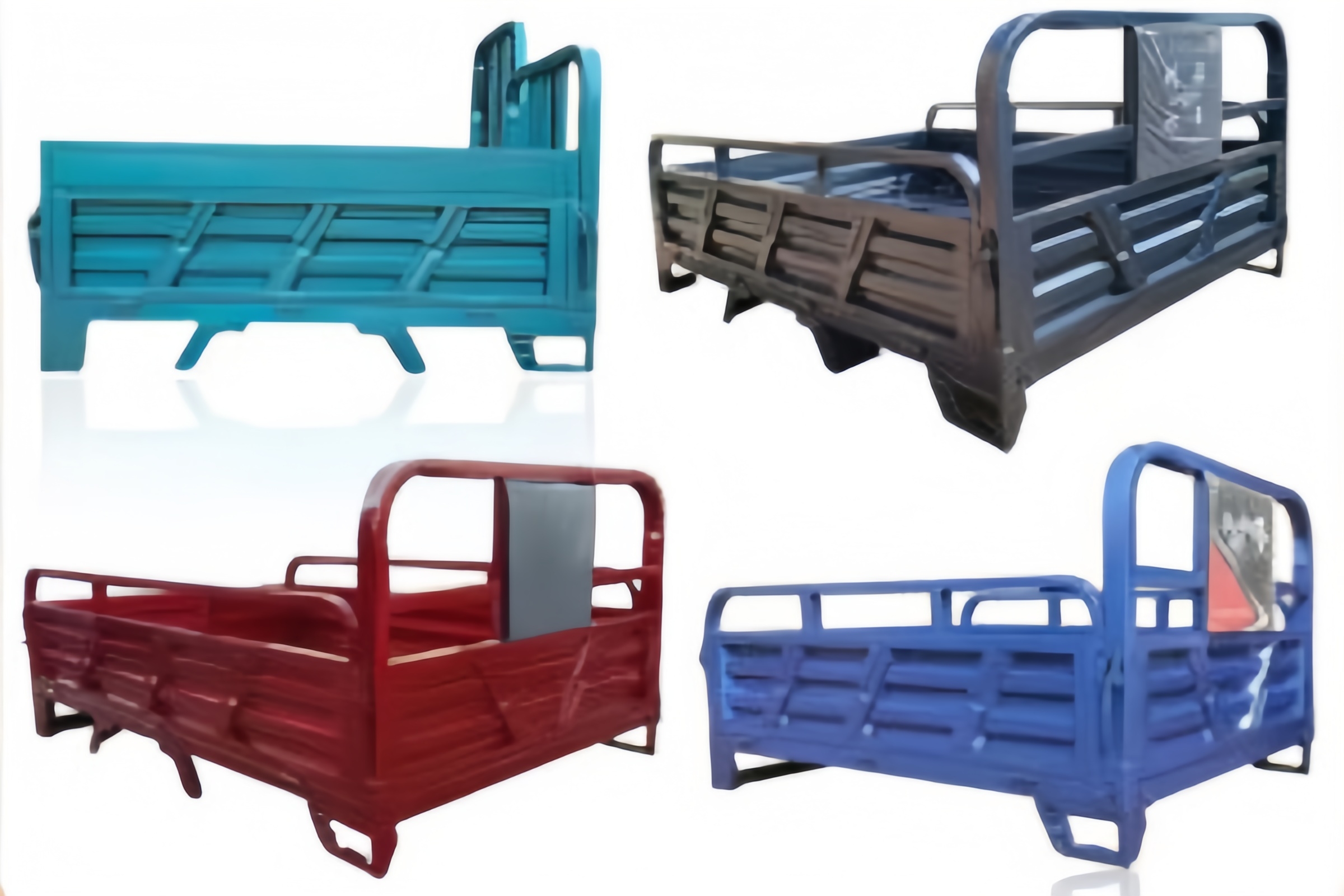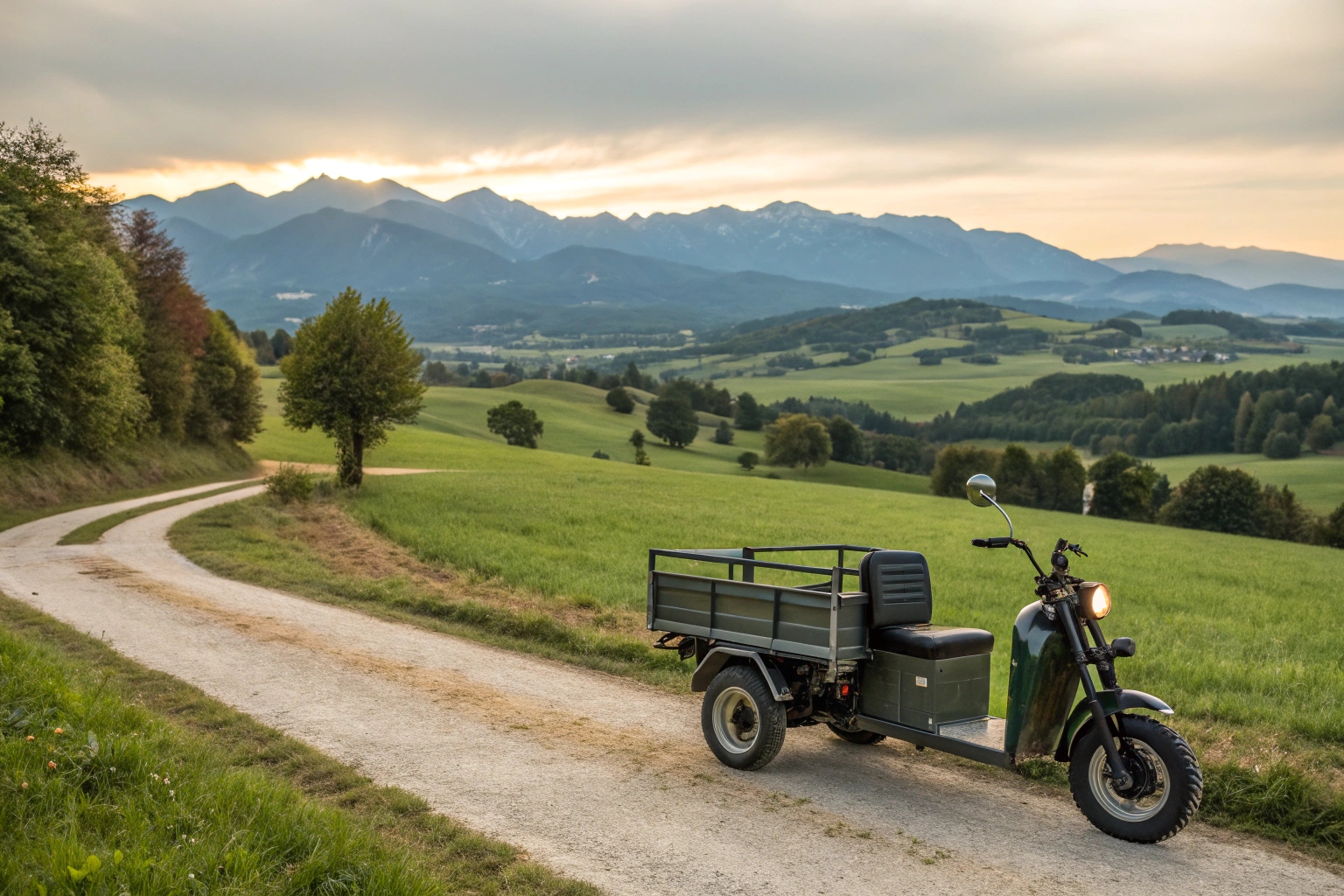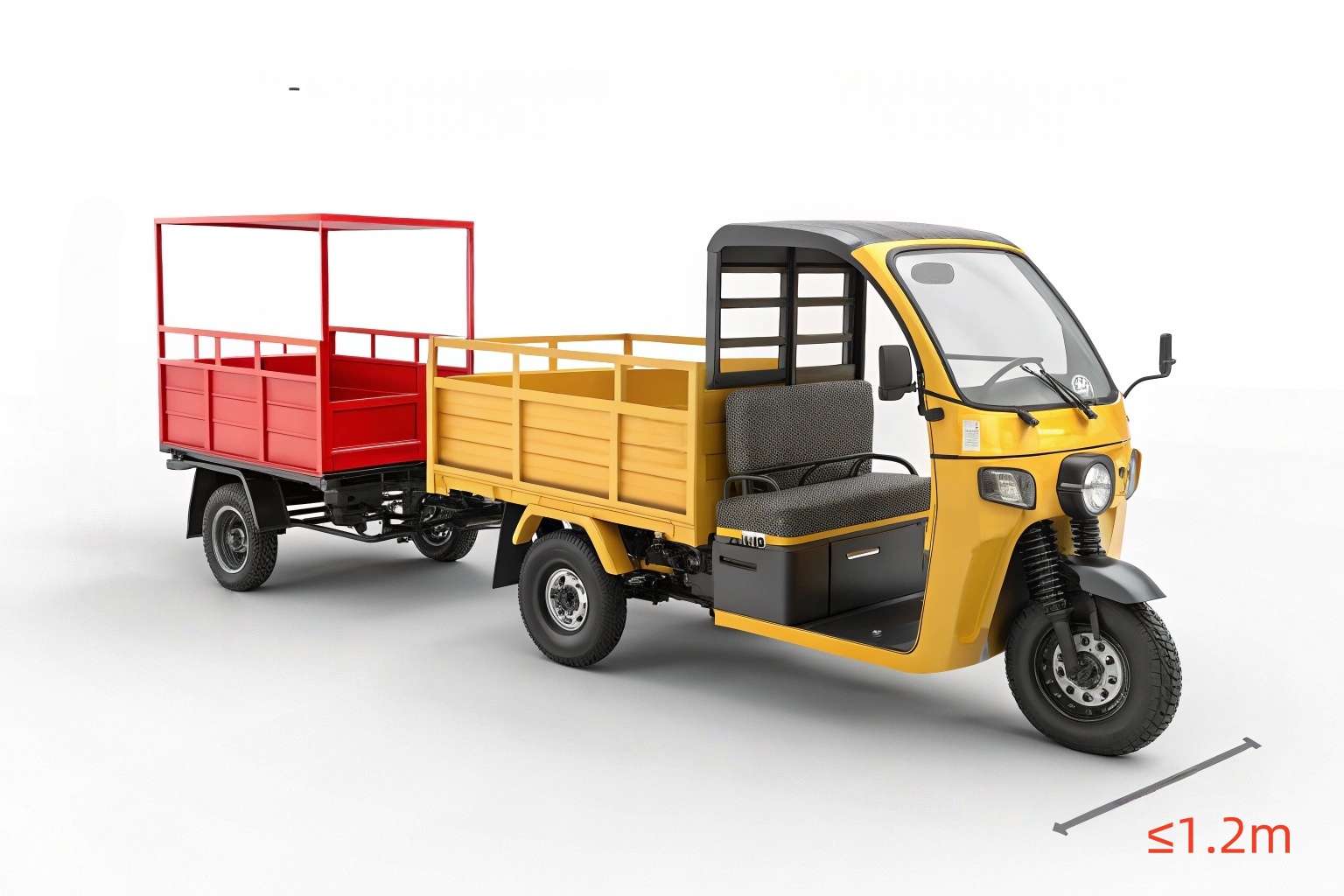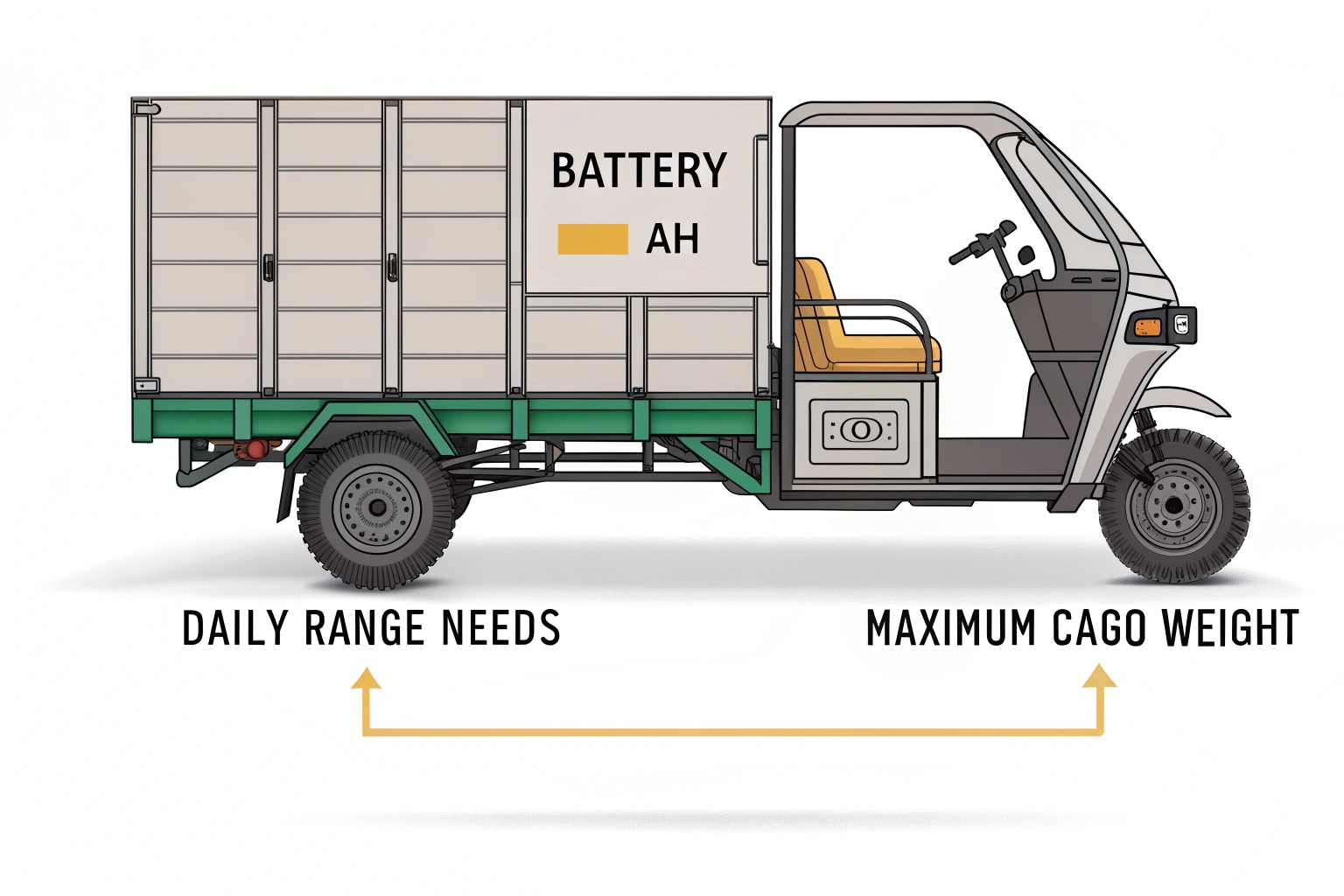Choosing the wrong size electric trike? A model that's too big is wasteful, and one that is too small is useless. Let's match the right vehicle to your business needs.
Select a tricycle with a payload capacity at least 20% greater than your average load. The ideal cargo bed size, motor power, and turning radius must match your most common delivery routes, whether they are narrow urban alleys or rugged rural roads.

From our factory floor, I see importers from all over the world making decisions on vehicle size. The most successful ones don't just pick from a catalog. They have a deep understanding of what their customers will carry and where they will drive. A tricycle that is perfect for delivering water jugs in a dense Manila neighborhood would be completely wrong for hauling farm produce in rural Kenya. Getting this right is the first step to building a profitable and reputable electric vehicle business. Let’s look at how you can make the right choice.
What cargo weight and volume should your electric tricycle be designed to handle?
Guessing your payload needs? Overloading a trike leads to breakdowns and costly repairs, while under-utilizing it wastes your investment. Let's find the sweet spot for durability and profit.
A good rule is to choose a model with a rated payload capacity that is 20% higher than your heaviest typical load. For light parcels, 300-500 kg is sufficient. For heavier goods like construction materials, look for models rated for 800-1200 kg.

The first question I always ask a new client is, "What are you going to carry?" The answer determines the entire design of the vehicle, from the frame's steel thickness to the suspension and axle. Don't just think about the average load; consider the heaviest possible load your customers might carry, even if it's only occasionally.
Calculating Your Payload and Safety Margin
The biggest mistake is buying a trike with a max load capacity that exactly matches your average load. For example, if your customers regularly haul 400 kg of goods, a tricycle with a 400 kg maximum rating is not enough. Constant operation at maximum capacity puts stress on the motor, controller, and frame, leading to a much shorter vehicle lifespan. I always advise adding a 20% safety margin. So, for a 400 kg load, you should be looking for a vehicle rated for at least 500 kg. This ensures durability and reliable performance.
Matching Cargo Bed to Your Market's Needs
The size of the cargo bed must match the volume and type of goods. A small, deep bed is no good for carrying long pipes, and a large, flat bed is inefficient for small, dense packages.
| Cargo Bed Size (L x W) | Typical Max Load | Best For... |
|---|---|---|
| 1.5m x 1.0m | 300 - 500 kg | Small parcel delivery, groceries, local vendors |
| 1.6m x 1.1m | 500 - 800 kg | Agricultural produce, beverage crates, light manufacturing parts |
| 1.8m x 1.2m or larger | 800 - 1200+ kg | Construction materials (bricks, sand), wholesale goods, waste collection |
How does your delivery route affect the ideal tricycle cargo truck bed size and power?
Is your tricycle struggling on hills or long routes? An underpowered motor burns out, and a small battery won't finish the job. Let's spec the right powertrain for your terrain.
For flat, short urban routes, a 500-800W motor is efficient. For hilly areas or long-distance rural deliveries, you absolutely need a higher-torque motor of 1000W or more, paired with a larger battery to ensure it can complete the route without issue.

The second question I ask clients is, "Where are you going to drive?" A tricycle's powertrain—the motor and controller—must be matched to the terrain. A motor that works perfectly on the flat streets of Bangkok will overheat and fail on the steep hills of a city in Colombia. Matching the machine to the environment is critical for reliability.
Powertrain for Flat and Urban Routes
For most city deliveries, the roads are paved and relatively flat. Speed is less important than agility and efficiency. In these cases, a motor in the 800W to 1000W range is usually perfect. It provides enough power to get a full load moving without consuming too much battery, keeping the operational costs low. It's the ideal setup for last-mile logistics companies in urban centers.
Powertrain for Hilly and Rural Routes
As soon as hills or unpaved roads are involved, everything changes. Here, you need torque, which is the rotational force that gets the vehicle moving from a stop, especially on an incline. I always recommend a 1200W motor or larger, often paired with a controller that can deliver high amperage. I had a client in Peru who transports construction materials in a mountainous area. We equipped his trikes with 1500W motors and reinforced suspensions. This powerful setup ensures that his vehicles can handle the steep grades with a full load, day after day, without failing.
What dimensions and turning radius work best for your operating environment?
Ever ordered a trike that can't fit through a key alleyway or gate? It stops your entire operation. Let's make sure your vehicle's dimensions are an advantage, not a liability.
For navigating tight urban spaces, aim for a tricycle with a width under 1.2 meters and a tight turning radius. For open areas like farms or industrial parks, a wider, longer bed offers more stability and cargo space, so dimensions are less critical.

A tricycle's physical size is just as important as its power. If the vehicle can't physically get to where the cargo needs to go, it's useless. This is especially true for importers serving dense urban markets or specific industrial sites. We can customize dimensions at the factory, so it’s important to know what you need before you place an order.
Why Dimensions Matter
The overall width is the most critical dimension. In many old cities, alleyways and gates are very narrow. A tricycle that is 1.3 meters wide might not be able to make the final delivery. The turning radius is also key. It determines how easily the tricycle can make sharp turns in tight spaces without having to do a multi-point turn, which wastes time.
Choosing Dimensions for Your Environment
Here is a simple guide to help you decide.
| Dimension | Recommended for Urban | Recommended for Rural/Open Areas |
|---|---|---|
| Overall Width | Under 1.2 meters | 1.2 meters or wider for stability |
| Overall Length | Under 3.0 meters | 3.0 meters or longer for more cargo space |
| Pagliko ng radius | As small as possible | Less critical, can be larger |
Before you order, I strongly recommend checking your local regulations. Some cities have strict rules on vehicle width for certain roads. For example, some jurisdictions limit vehicle width to 1 meter for use on certain paths. Knowing this in advance will save you from importing a container of unusable vehicles.
How do battery type and capacity influence your size and range decisions?
Do you need to maximize cargo space or driving range? You can't always have both without increasing costs and weight. Let's find the right balance for your business needs.
A larger, heavier battery provides longer range but reduces your available payload and increases the vehicle's overall weight. You must balance the battery capacity (measured in Ah) with your daily range needs and maximum cargo weight to optimize performance.

Finally, the battery choice links everything together. A powerful motor for heavy loads needs a large battery to feed it, but a large battery is heavy and takes up space. This creates a classic trade-off that every importer must understand.
The Payload vs. Range Trade-Off
It’s a simple game of physics: every kilogram of battery you add is one less kilogram of cargo you can carry. For example, a large 72V 100Ah lithium battery pack can provide incredible range, but it can also weigh over 50 kg. That's 50 kg of your payload capacity gone before you even load a single item. On the other hand, a small 60V 45Ah lead-acid battery pack is cheaper and leaves more capacity for cargo, but you will have to charge it more often and the vehicle’s range will be much shorter.
A Practical Recommendation
You need to have a realistic idea of the daily distance your vehicles will travel.
- For routes under 40 km with light-to-medium loads: A standard lead-acid or a smaller lithium battery (e.g., 60V 45Ah) is often sufficient and cost-effective.
- For routes over 60 km or with heavy loads on hills: You must invest in a large-capacity lithium battery (e.g., 72V 80Ah or more). The higher energy density of lithium gives you the range you need without adding as much weight as a comparable lead-acid battery would.
This decision directly impacts your vehicle's daily utility and profitability.
Pangwakas na Salita
The right electric tricycle isn't the biggest or strongest. It's the one perfectly sized for your cargo, route, and market. Choose wisely to ensure efficiency and long-term profitability.

